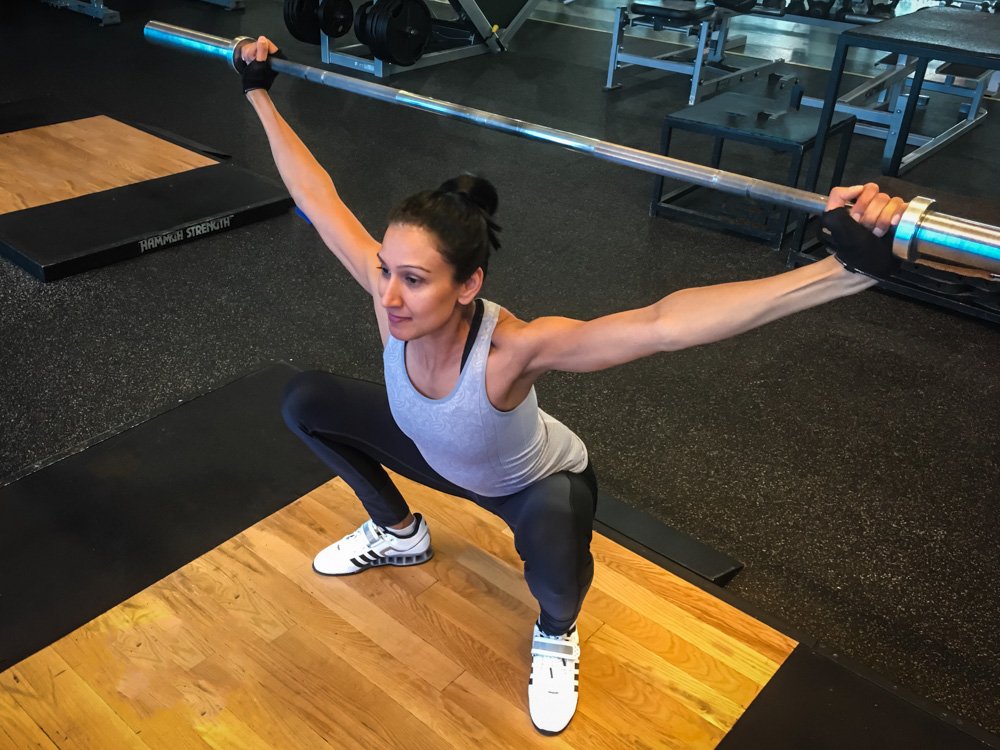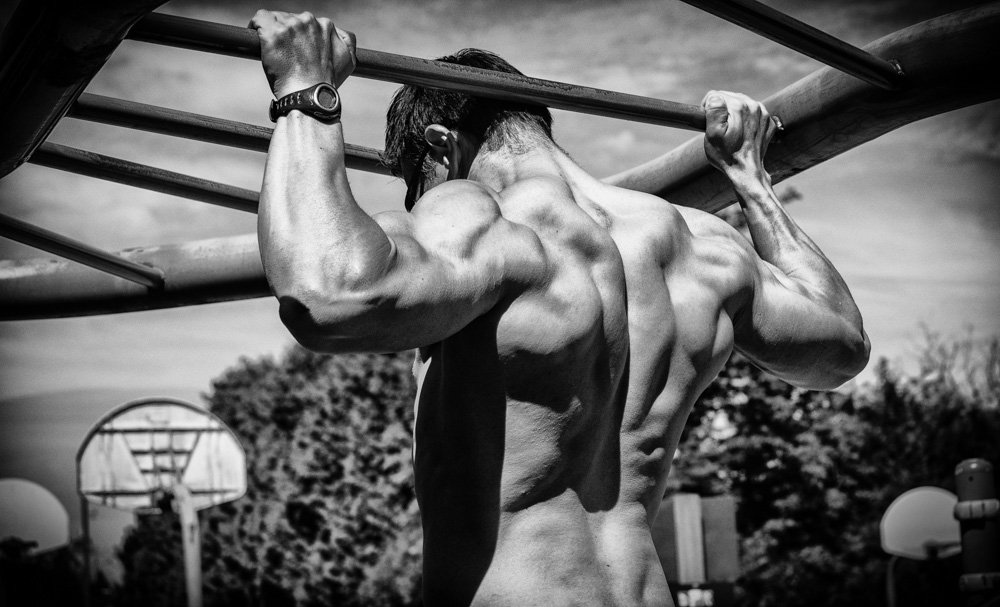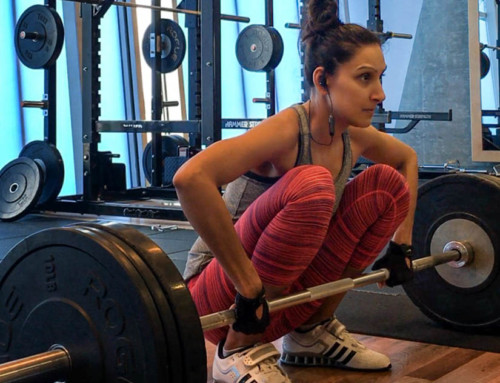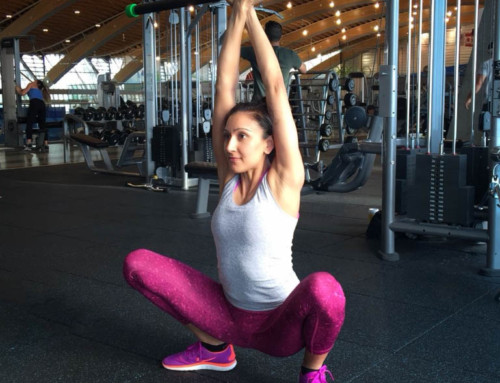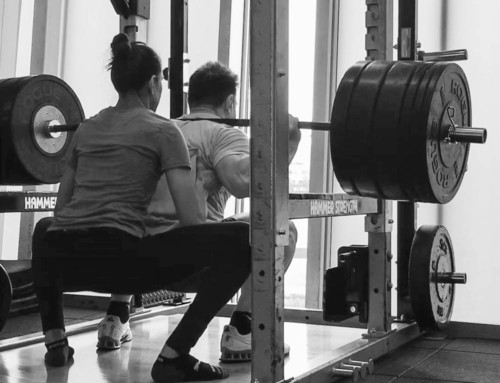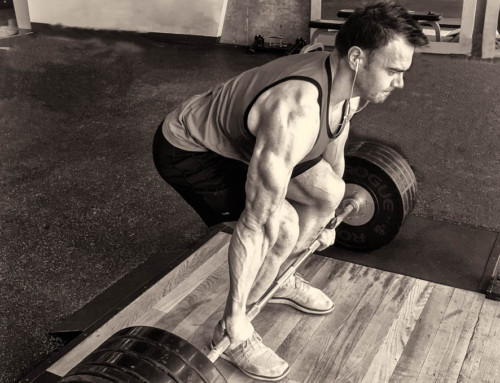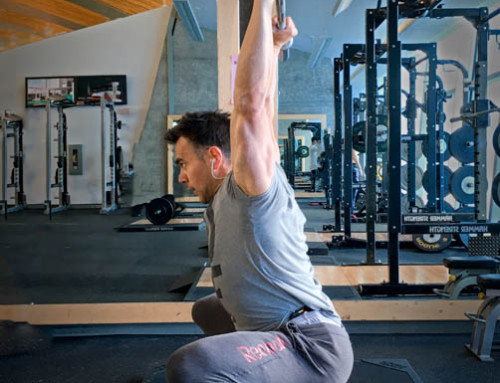One of the top questions we get asked is:
What are the best exercises to build muscle, strength, and get rid of the belly fat, as well as “very special movements” that accomplish it all?
Our response, is that most of us look for answers in all the wrong places. It is not so much the “what” but rather the “how” when it comes to mechanical overload. Any exercise performed with proper technique, focus and intensity yields results its designed for. Once the attitude component is ready to go, then you can continue to enhance progress by selecting exercises that engage more body systems and to further extent. In this article, we’ll discuss the top 7 most effective exercises to our goal of Stronger Leaner Faster.
Know Your Goals
Whenever searching your local library, book store or internet for “best exercises”—a sea of possibilities quickly emerge. Some of the advice within this literature is similar while other significantly different. Which one is correct, and which one is for you?
We talk about this often and for good reasons. Before engaging in anything, think about how it will affect you. This is where knowing what you want and goal setting is an important process, that needs to be developed and recorded. It is an important factor, as far too often we gravitate towards an article or book cover with the prettiest pictures and more attractive colour schemes instead of personally relatable content.
Know your goals and regularly spend time thinking, shaping and developing them. The more you think about what you want, the more details can be developed with clearer direction of how to proceed.
Apply this Criteria
The next stage, after you know your goals, is to consider the benefit of each exercise. When looking at the exercises for your next routine, think of how they will assist you in attaining set goals.
At Science and Strength we select exercises based on our goals, which is the pursuit of Stronger Leaner Faster versions of ourselves. This philosophy translates into physical actions that promote adaptations of greater lean body mass, lower body fat, greater mobility and improved recovery. We consider the following criteria whenever we make an exercise adjustment or develop a new program.
Movement
The first parameter is to improve our physical quality, and that is through movement. Busy schedules consisting of numerous hours of stationary sitting position wreak havoc on our posture, muscles, joints and overall movement. The first order of business is to re-train proper body movements, improving intended range of motion and engaging more of the body systems to accomplish such tasks.
Biomotor Ability
To create better body movement, we need to practice skills by improving our biomotor abilities. Abilities such as strength, endurance, speed, balance, mobility, flexibility and coordination make up majority of the movement patterns. These movements are important and used in almost every activity:
- keeping a straight, erect posture during a walk (balance, coordination and endurance)
- stretching over and touching your toes (flexibility and mobility)
- squatting a heavy barbell (strength, muscular-endurance, mobility)
Specificity
In order to practice and develop a specific skill within our biomotor abilities, we need to practice that particular skill. This is the principle of specificity and it relates to looking at exercises that either perform or closely mimic such movements. By selecting multi-joint exercises (compound lifts) that improve muscular and nervous systems, the body recruits more muscle tissue to develop physical force and its overall performance. Becoming proficient at these exercises, the body also improves its effectiveness in producing force through inter- and intramuscular coordination, as well as its internal energy supply and recovery. This is also where fat burning component comes into play.
The Best 7 Exercises you need to Perform
Hip – Hinge BARBELL DEADLIFT (Conventional aka Classic)
Compound lifts that engage hip-hinge are not only good for that particular movement, they also incorporate all of the muscles of your posterior chain. When thinking of best single exercise to develop such skills, Deadlifts stand alone from the rest. Considered the best strength-building exercise by numerous experts, deadlifts engage every muscle in your body (from toes to your ears), loading every joint and associated connective tissue in order to perform the movement. Core stability and abdominal wall are extensively challenged during this lift and greatly contribute to overall success of deadlifts, which build strong physique better than most alternatives. Furthermore, moderate-heavy submaximal loads greatly engage CNS by recruiting and activating available motor units (MUs).
Different foot and hands positioning further develop styles of Deadlifts in order to achieve specific biomotor ability goals, including strength (in term of 1RM) and speed (through concentric contraction), or other desired skills.
- Sumo Deadlift has a bigger quadricep emphasis through the movement and smaller hip angle, due to a more erect starting position.
- On the other hand, snatch (wide) grip with conventional stance increases range of motion— increasing overall range of motion, hip drive and the whole posterior chain.
- For us, a classic (aka conventional) Deadlift is a go-to movement for overall strength, hip and posterior chain development. With narrower foot stance and standard clean (shoulder width double pronated—overhand) grip, places the body in an optimal position to work above mentioned skill sets. Also, this classic places tremendous emphasis on your core, as trunk stability is paramount in achieving a successful lift.
Knee Extension – BARBELL SQUATS
There is no better exercise then squats to develop lower body strength, as such lifts have carry over affects that benefit the rest of the body. The deadlift creates overall strength however, squats specify this strength towards increasing biggest muscles in your body—glutes and quads. If Deadlifts are the brutes of strength building, Squats are the tacticians.
Squat exercise is a mass builder promoting not only bigger legs, but enhancing total body hypertrophy results. There is significant hip and ankle mobility involved that directly reflects the quality and range of motion of this movement. For many who suffer knee pain when performing squats is often related to mobility issues of stiff hips and/or ankles. Some squat variations actually address this issue and increase knee stability.
To improve mobility, squats can be tailored working on greater range of motion as well as joint emphasis involved. Foot position, bar position, style of squat (one leg lunge of Bulgarian style, versus two leg) create numerous combinations between ankle and knee flexion; and hip extension and external rotation. Practicing and developing preferences for one style of squat over another is normal. For some, wide stance low bar may be the optimal version in achieving their goal, while others prefer Bulgarian and other one-legged squat options. No matter what type of squat you select, each version is sure to engage many muscles especially quads, glutes, core / abdominal wall, posterior chain, especially upper back.
Squat is a movement that can develop many biomotor abilities including mobility, strength, speed, muscular endurance, coordination, flexibility, balance and power. Also, due to its hypertrophy factors, versions of squat exercises improve lagging lower body parts that are important factors within specific sports or activities.
Vertical Push – BARBELL PUSH PRESS
Many believe that vertical push strictly develops shoulders. Shoulders are a big component of this movement however, it’s not the only one. Vertical push is a classic display of strength, by picking up something heavy and pushing it overhead. Vertical push is a great mass and strength builder of upper body and overall core development. Many prime movers involved in shoulders and upper back engage in this movement along with numerous muscles that contribute to the cause in supporting or stabilizing roles. Because vertical push involves the most complex body joint—shoulder, many exercise versions of this movement exist to address its versatility through several body planes.
Shoulder pain is a common issue for many that limits some exercise options and range of motion. To address these concerns, different versions of vertical push exists using variety of equipment from resistance bands, kettlebells, dumbbells, barbell and bodyweight. Again hand and bar positions further diversify each exercise. For us, simple is often most effective by using a standing push barbell press. This movement is initiated by the legs, transferring momentum through the core into upper body and into a racked bar, initiating the lift into an overhead position. Vertical push is a favourite option to improve many biomotor abilities including strength, muscular-endurance, speed, mobility, flexibility, balance and coordination.
Vertical Pull – PULL-UPS
The best vertical pull, bodyweight exercise is also one of the best overall exercises. Pull-ups are a compound movement that develops strength, mobility, power, muscular endurance and coordination. Pull ups are often trained in stages allowing the body to acclimatize to this exercise and improve performance (more consecutive repetitions). With practice, the body learns to synchronize its efforts through inter- and intramuscular coordination, while increasing muscle density through the entire back including upper and lower traps, arms and core. Different grips give rise to several versions of this exercise, each enhancing more performance from specific muscle group(s). Bodyweight training is an important aspect and pull-ups are its primary route of strength gains.
Horizontal Push – BARBELL BENCH PRESS
In order to improve horizontal push, you need to engage muscles, big and small that contribute to this movement. These include but not limited to chest, front deltoid, upper back, core and arms (particularly triceps). Again, numerous options for horizontal push exist, but the most affective for developing all mentioned muscle groups and their coordination during such movement is the flat bench barbell press. Heavy barbell does wonders here developing strength, coordination and mobility. You can diversify this exercise through different grip styles, bottom bar positions, body positions (arced versus flat) and bench angles (flat, and degrees of decline or incline) engaging greater participation of specific muscle groups. This is a great compound movement that increases hypertrophy of the upper body. Bench press will also answer the most commonly asked question in the gym—how much do you bench?
Horizontal Pull – BARBELL or DUMBBELLs BENT-OVER ROWS
Back is a large area consisting of many muscles, some of which intertwine with other groups including shoulders, trapezius and lower back. Being part of posterior chain, back has many functions directly engaged in several pulling and pushing movements. Training options for this group of muscles even through compound lifts are endless. From equipment, to body and grip style and position, you can perform horizontal pull with one arm (unilateral) at a time, or using both (bilateral) simultaneously.
Bent over rows are the best exercise to train such movement, engaging numerous muscle groups including entire posterior chain, core and arms throughout each repetition. This exercise increases lean body mass especially mid- and upper-back, creating a thicker overall appearance. Barbell version of bent over rows is another favourite alternative engaging working muscle groups with a bit more precision. Due to its ability to train posterior chain, bent over rows are great to practice your hip hinge, which has carry over benefits to other movements, such as the deadlift. Bent over row increase numerous biomotor abilities including strength, speed, muscular endurance, coordination and mobility. Dumbbell versions allow this exercise to be practiced one arm or both at the time. We prefer to use both dumbbells simultaneously, adding the twist at the top of the movement (from pronated to neutral—aka hammer grip), thus further stabilizing shoulders and upper back.
Core – Total Body – LOADED CARIES
There are many options to engage the core including the abdominal wall and lower back. Twists, leg raises, pikes and planks are all good options, but we have another contender, that not only blitzes your trunk, it engages total body, improves CNS efficiency, and directly responsible for muscle hypertrophy and body fat loss. This sect of exercises are called Loaded Caries, which encompass weights being carried for distance or time, in variety of ways. Loaded carries are easy to learn while improving strength, endurance, muscular endurance, power, balance, stability and coordination. There are three main categories that many of these loaded caries fall into:
- carrying the weight (at some racked or loaded position),
- walking with the weight (in an extended arm(s) position), and
- pushing or pulling the weight (often on a sled)
These exercises are even more diversified through several versions within each category by using one or both hands with selected positions performed for distance or time. The exercises greatly emphasize hip stability, targeting core through unique level of motioned load intensity.
Loaded caries produce immense strength and improve athletic performance, addressing muscle misbalance or improve recovery through rehabilitation therapy. The most commonly known loaded carry is the Farmer’s Walk. Grabbing moderate to heavy loads (dumbbells, barbell, trap bar, kettle bells, and so forth) and walking with them for set distance or time. Farmer’s Walks have profound effect on the body, improving CNS response, muscle conditioning and hypertrophy, as well as core, hip and shoulder stability during movement.
FINAL THOUGHTS
There are many different exercises, designed for different reasons and do different things. Knowing your goals will initiate the process of exercise foundation towards program design. To generate effectiveness, physical exercises should be trained with purpose of developing skills and improving biomotor abilities. These skills can be developed through exercises that utilize or closely relate to natural body movements such as hip flexion, knee extension, vertical push and pull and horizontal push and pull.
Focusing on specific movements, we select compound exercise that utilize numerous body parts, joints and systems in order to generate optimal force as efficiently as possible. Options such as barbell versions of deadlifts, squats, push press, bench press, bent over barbell rows, pull-ups and loaded carries are examples of functional exercises developing numerous biomotor abilities, increasing lean body mass while decreasing body fat. To achieve goals, you need to commit to the process, remembering that, “how” you perform an exercise is often more important than “what” exercise is performed.
If your goals are Stronger Leaner Faster be sure to learn more about our books:
OR, download our Free ebook Sweater Weather Body – 5 Weeks Training Included plus more!
If you goals are not Stronger Leaner Faster, may we suggest you try it 🙂

